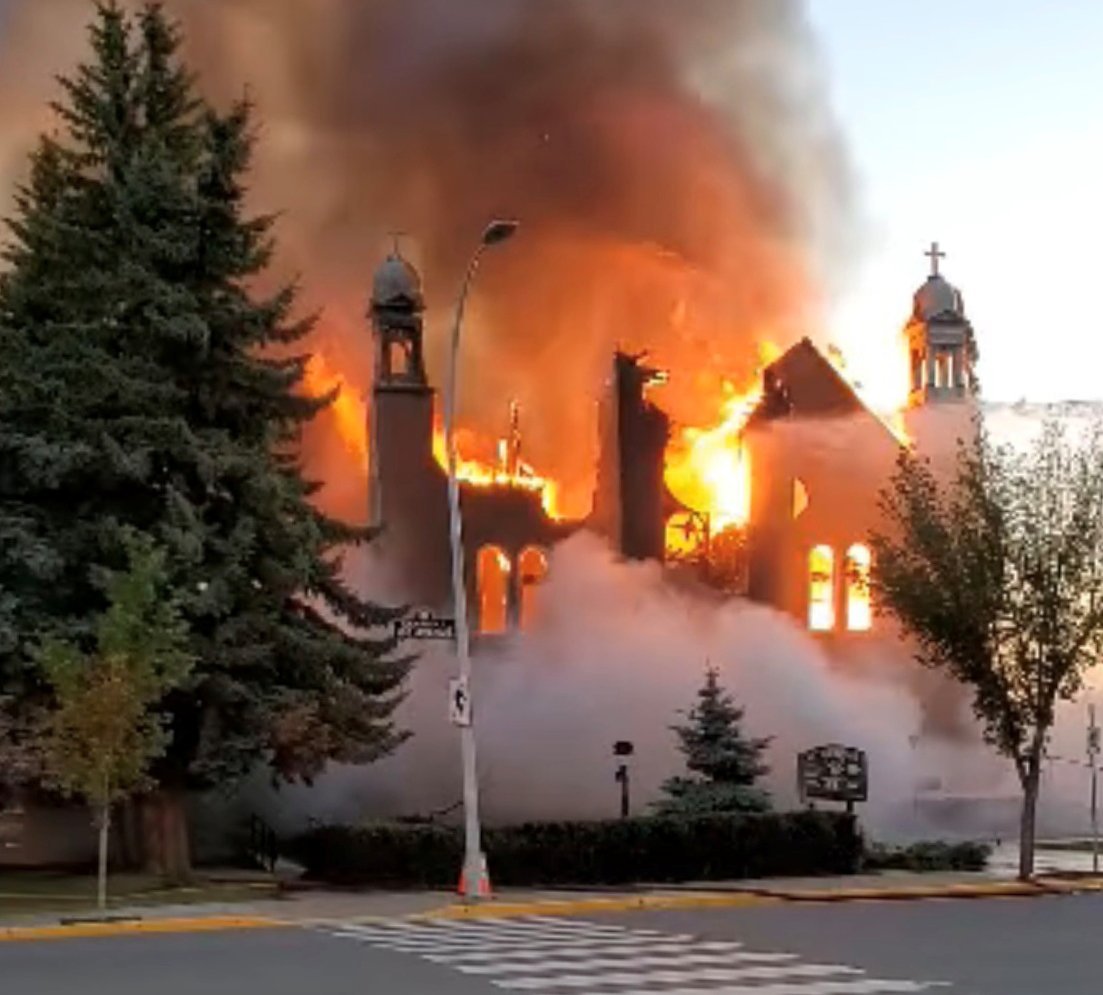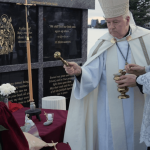TORONTO — The alarming number of arsons that have defiled or outright destroyed Catholic and Christian houses of worship over the past several years did not garner attention from any of the political parties during the 2025 federal election campaign.
Nevertheless, church burnings — as well as attacks on synagogues, mosques, and temples — remain a clear and present crisis.
Until now, Canadians’ awareness of these incidents was limited to individual news reports and databases compiled by organizations such as the Catholic Civil Rights League. That changed on April 24 with the release of Scorched Earth: A quantitative analysis of arson against Canadian religious institutions and its threat to reconciliation, a new report from the Macdonald-Laurier Institute.
The report, written by academic and economist Edgardo Sepulveda, represents the first empirical investigation into the sharp rise in these attacks since May 27, 2021 — the day the Tk’emlúps te Secwépemc First Nation announced the discovery of 215 suspected unmarked graves near the former Kamloops Indian Residential School. This claim remains unproven.
After reviewing Statistics Canada data, Sepulveda found that arsons targeting religious institutions nearly doubled relative to all arsons in Canada — rising from 0.38 per cent between 2011 and 2014 to 0.73 per cent between 2021 and 2023. In absolute terms, the number of arsons at religious sites per year was 45, 44, 36, and 31 in 2011–2014, compared to 90 in 2021, and 74 in both 2022 and 2023.
Many of the fires occurred in areas where First Nations had recently announced unmarked grave discoveries. Of the 17 high-profile announcements, 15 were in Alberta, Saskatchewan, Manitoba, and British Columbia. In those provinces, arsons at houses of worship rose from 33 incidents between 2011–2014 to 78 between 2021–2023. British Columbia saw a spike to 67 cases, up from 42.
Arguably the most startling finding is that police have laid charges in fewer than four per cent of religious arson cases between 2021 and 2023.
“The identities and motivations of the arsonists responsible for more than 96 per cent of arsons remain unknown,” the report states — a charge rate far below the Canadian average of 11 per cent for property arson.
“My sense is what happened in 2021, ’22, and ’23 is that both from a policy perspective, but also a police and fire services perspective, they weren’t really prepared to address this surge in arsons,” Sepulveda told The Catholic Register. “And the evidence of that is the four-per-cent solve rate.”
While it’s too late to “anticipate and plan for risk,” he said, there needs to be acknowledgement of past mistakes — “fool me once” — and a course correction.
Unfortunately, Sepulveda’s outlook is not optimistic.
“Unfortunately, I predict that there will be a continuation of this. I’d be surprised that there wasn’t.”
The Scorched Earth report goes beyond data, offering concrete policy recommendations to help curb these attacks on sacred spaces.
Chief among them is a proposal to create a national or provincial integrated police and fire unit dedicated to religious arson investigations. Sepulveda draws inspiration from the U.S. National Church Arson Task Force, formed by President Bill Clinton in 1996 in response to fires targeting Black-majority churches in the American South. That unit, involving over 200 federal agents from the ATF and FBI, achieved a 36 per cent arrest rate — more than double the U.S. average — and reduced annual church arsons from 297 in 1996 to 140 by 1999.
Sepulveda also recommends expanding Indigenous-led police and fire services and ensuring Indigenous participation in integrated investigative units.
He further urges the federal government to complete a comprehensive national and on-reserve fire statistics database, which remains lacking.
Sepulveda warns that the 2021–2023 wave of arsons must be seen as “a dry run” for how the country might react if verified human remains are ever discovered.
He concludes that beyond the “inherent danger and financial cost” of these acts, there is a deeper risk: “The path of reconciliation itself may become scorched.”
Many non-Indigenous Catholics and Christians have expressed outrage at the attacks — a sentiment shared by many Indigenous Canadians.
“Indigenous communities have expressed their opposition to such acts of arson, not only due to the significance of these churches to some of their members’ faith, but also because of the risk of perpetuating a destructive cycle that could hinder the progress of reconciliation,” wrote Sepulveda.
The Catholic Register




